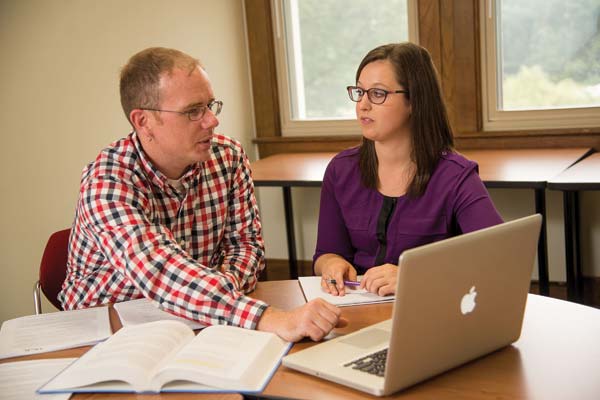Understanding Pain
by Erich Van Dussen
How would you rate your pain, from zero to 10? If you’ve ever heard this question, you know how difficult it can be to answer: How can pain really be measured? And how can objectively effective treatment be guided by a subjective metric?
According to the Institute of Medicine of the National Academy of Sciences, chronic pain affects 100 million American adults and costs $635 billion a year in medical treatment and lost productivity. At HCR Home Care, a private Rochester-based home healthcare provider, “we think of pain assessment as the fifth vital sign,” says Sue Bourne, senior director of clinical operations. “Adequate pain relief is so important to an individual’s quality of life.”
That urgency led HCR to want to study the effects of comprehensive, professional pain-assessment training. Inspired by a long history of collaborative projects with Nazareth, the company approached Shirley Szekeres, Ph.D., dean of the School of Health and Human Services (SHHS), to help design and carry out the study at a new HCR location in Clinton County, N.Y.
The program, based on educational modules originally developed at the University of Washington, took place over three months in late 2012. Nurses and clinicians were introduced to new methods of pain assessment and to the importance of listening to as well as observing patients in order to arrive at a more holistic understanding of their pain needs.
Identical pre- and post-testing confirmed the program’s effectiveness, and subsequent follow-ups helped ensure that the lessons aided the clinicians’ approaches to patient care. “The exciting thing is, the patients were getting better care because the nurses had gone through this training,” says Ryan O’Loughlin, Ph.D., assistant professor of psychology, who led the data-analysis work.
A formal analysis of the data is being included in a manuscript that will eventually be submitted to scholarly nursing journals. Meanwhile, HCR has begun to introduce the training model at other locations; and the study has reinforced Szekeres’s interest in seeing SHHS add an academic specialization in interprofessional pain management. “We want to better prepare occupational therapists, physical therapists, speech-language pathologists along with other members of a health care team to more effectively help patients describe and deal with their pain,” she says.
This is O’Loughlin’s first interdisciplinary project since joining the Nazareth faculty, and he says he’s excited at the prospect of more collaborative efforts in the future.
“I’m hoping it’s just the first,” he says. “There’s a growing recognition that people from different fields can come together for work like this—bringing their own strengths to help ask better questions—and derive more meaningful results than they might have been able to individually.”
Erich Van Dussen is a freelance writer in Rochester, New York.

Ryan O’Loughlin, Ph.D., assistant professor of psychology, and Erin Carroll ‘14 worked on the data analysis for a recent SHHS pain management study.
For more information, visit naz.edu/hhs.